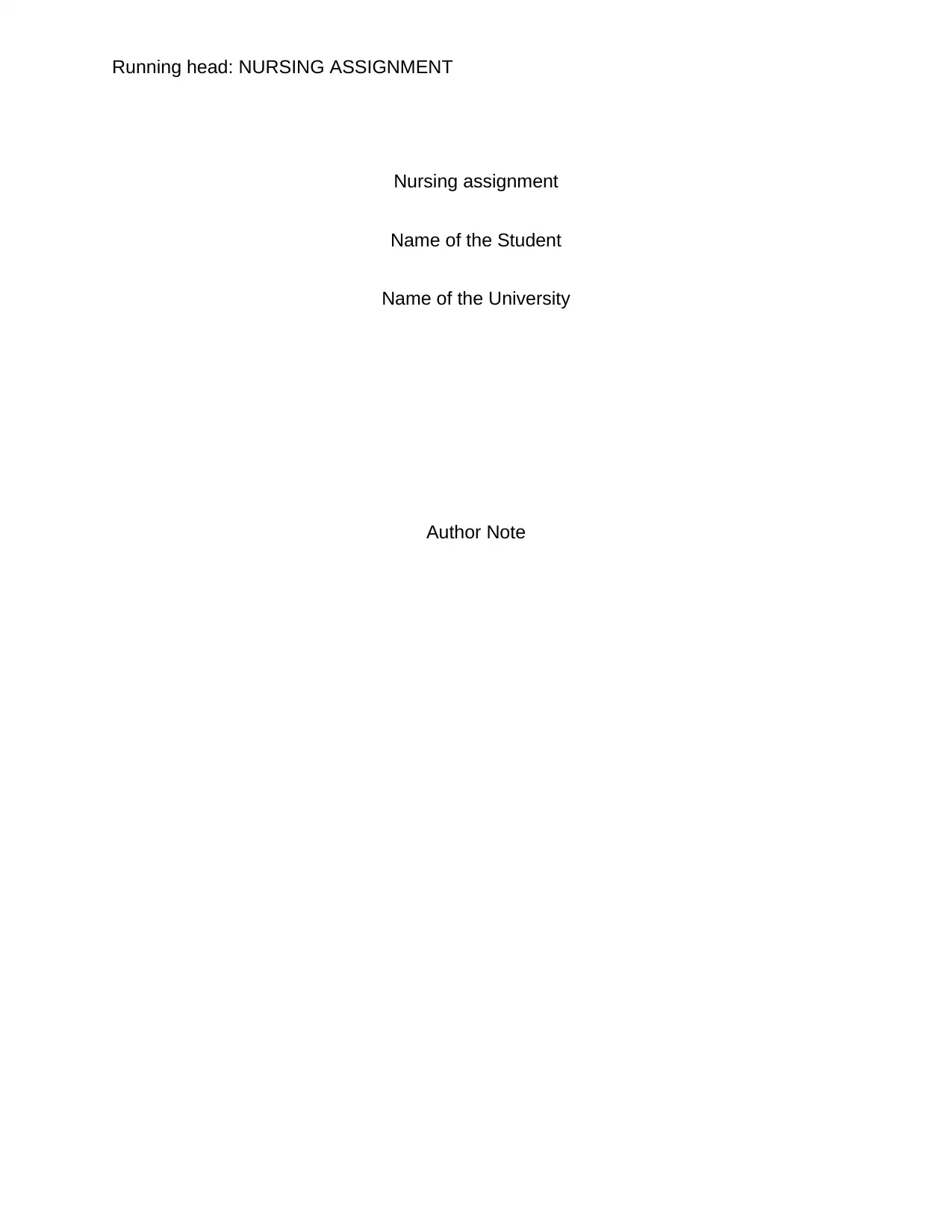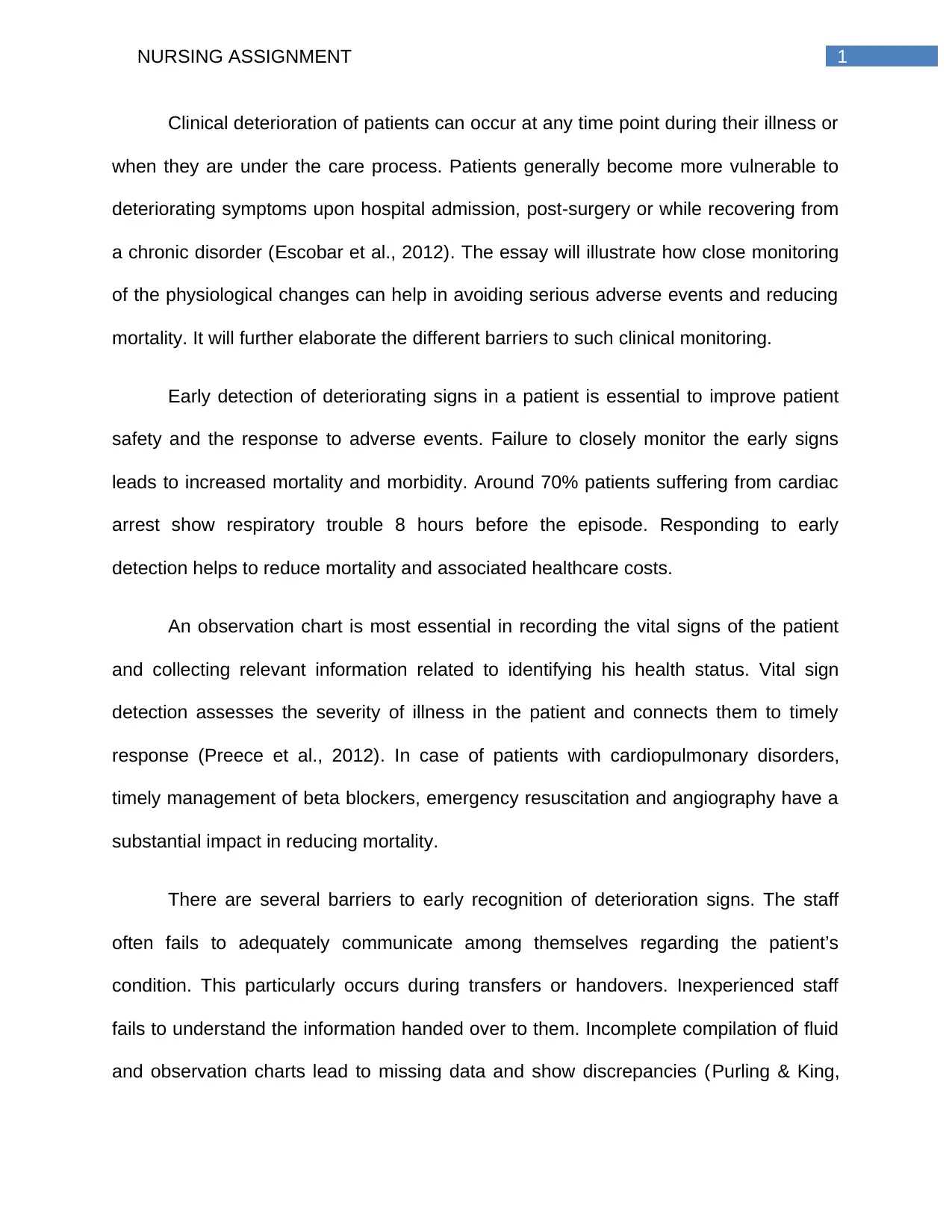Nursing Assignment: Barriers to Clinical Monitoring and EWS
VerifiedAdded on 2020/04/01
|4
|879
|124
Essay
AI Summary
This nursing assignment examines the critical issue of clinical deterioration in patients, emphasizing the significance of early detection of adverse events to improve patient safety and reduce mortality. The essay explores how close monitoring of physiological changes, particularly through the use of observation charts and vital sign analysis, can help in identifying and responding to deteriorating conditions. It also delves into the barriers that hinder effective clinical monitoring, such as communication gaps, inexperienced staff, and staffing shortages. The assignment highlights the role of Early Warning Systems (EWS) in hospitals, detailing their use of scoring systems based on vital signs to alert medical teams to critical conditions. The essay concludes by underscoring the impact of effective communication, staff training, and adequate staffing in optimizing the use of EWS and reducing preventable deaths and patient deterioration cases.
1 out of 4











![[object Object]](/_next/static/media/star-bottom.7253800d.svg)